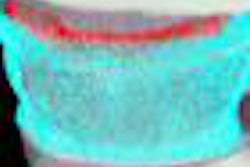Dear CT Insider,
A diagnosis of inoperable lung cancer can be grim, but patients are hearing bad news less often these days at Monash Medical Centre in Melbourne, Australia. There, radiologists equipped with a wide-area CT scanner are staging lung cancer patients as they breathe; they are finding that very few patients have tumors that are actually attached to an adjacent structure, opening the door to resection and hopefully a cure.
The research team is preparing to publish its first results soon, but we hope you'll check out the technique here first, in this issue's Insider Exclusive. You'll find the details -- along with images and video clips showing the protocol in action -- by clicking here.
In other lung cancer news, CT can't determine with any certainty whether a screen-detected lung nodule is malignant, of course. But when Dutch radiologists analyzed hundreds of nodules looking for features associated with resolving or nonresolving nodules, they found some interesting patterns that could help clinicians decide on the next step. See what the Groningen-based study team found by clicking here.
Just as computer-aided detection (CAD) is highlighting suspicious nodules in the lungs, a new CAD scheme is helping diagnose vertebral body fractures at CT. According to the story by senior editor Erik L. Ridley, the investigational technique delivered high sensitivity for the detection of fractures in a group of test patients. Find out what's next by clicking here.
Stress myocardial perfusion is an excellent test to evaluate chest pain patients. But coronary CT angiography is a more cost-effective first exam over the long haul, according to a model analysis presented at last week's Society for Cardiovascular Magnetic Resonance meeting. Using data from the U.S., the U.K., and the Netherlands, the study team evaluated several modalities to determine which protocols were the most cost-effective over time. CT was best when paired with a partner, according to the story you'll find here.
Are all these CT scans boosting the risk of excess cancers in patients referred for imaging? Not likely, according to a five-year study from Boston that looked at radiation risks in young adult patients scanned anywhere from one to 15 times in the course of their care. Statistically, they were far more likely to die of the underlying disease for which they were referred to imaging. And patients scanned very frequently -- the target of some earlier studies -- faced even lower risks from CT radiation, the group reported. Click here to learn more.
Finally, another big player has recommended lung cancer screening with CT. The American Cancer Society's recommendation is the latest step on a long path to routine screening that began when the National Lung Screening Trial found a strong survival benefit for screening in long-term smokers. But screening advocates want more, in a story you'll find here.
We invite you to scroll through the links below for more news about radiology's most important modality. You'll find it all here in your CT Digital Community.




















